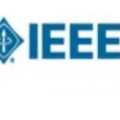Minerals are indispensable for a functioning modern society. Yet, their supply is limited causing a need for optimizing their exploration and extraction both from ores and recyclable materials. Typically, these processes must be meticulously adapted to the precise properties of the processed particles, an extensive characterization of their shapes, appearances as well as the overall material composition. Current approaches perform this analysis based on bulk segmentation and characterization of particles imaged with a micro CT, and rely on rudimentary postprocessing techniques to separate touching particles. However, due to their inability to reliably perform this separation as well as the need to retrain or reconfigure methods for each new image, these approaches leave untapped potential to be leveraged. Here, we propose ParticleSeg3D, an instance segmentation method that is able to extract individual particles from large micro CT images taken from mineral samples embedded in an epoxy matrix. Our approach is based on the powerful nnU-Net framework, introduces a particle size normalization, makes use of a border-core representation to enable instance segmentation and is trained with a large dataset containing particles of numerous different materials and minerals. We demonstrate that ParticleSeg3D can be applied out-of-the box to a large variety of particle types, including materials and appearances that have not been part of the training set. Thus, no further manual annotations and retraining are required when applying the method to new mineral samples, enabling substantially higher scalability of experiments than existing methods. Our code and dataset are made publicly available.
翻译:暂无翻译



